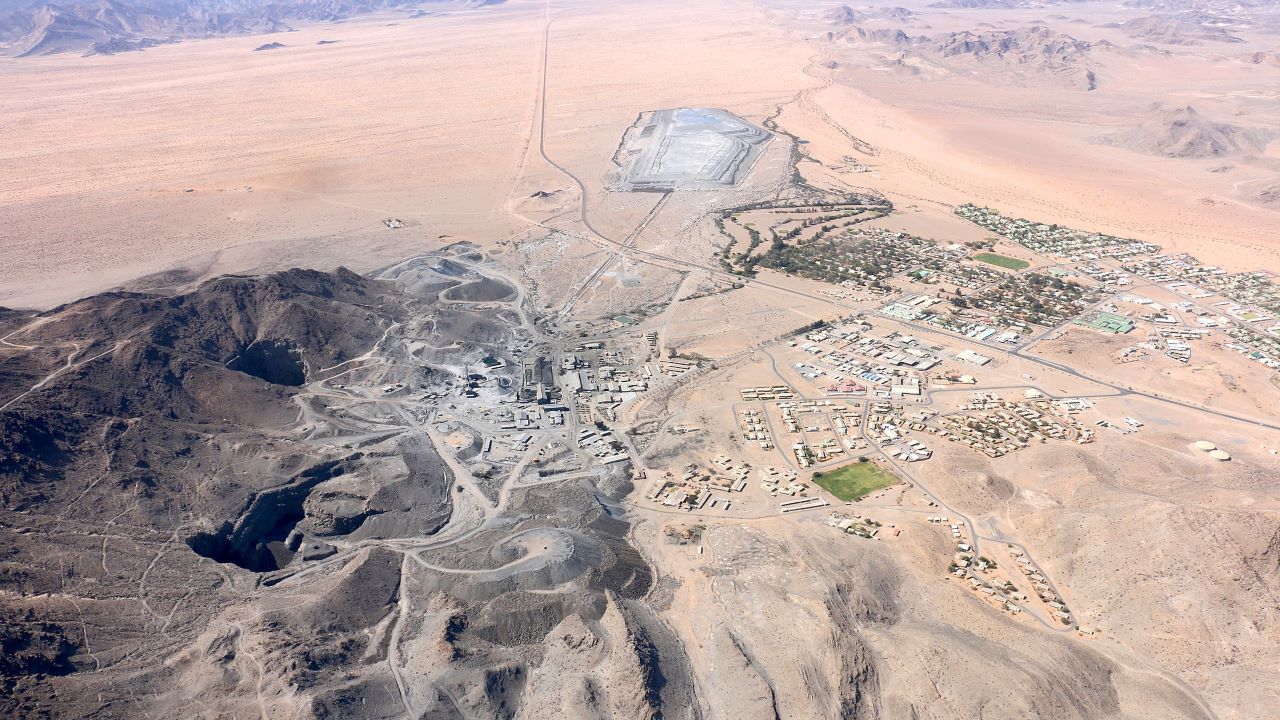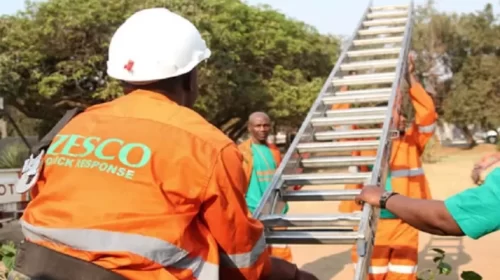Meet the Zambian at the helm of Namibia’s mining sector
According to Veston Malango, the Chamber of Mines of Namibia’s CEO, a rush of investment last year into Namibia’s mining sector provides two instructive lessons for other countries. Firstly, that it may only take one decisive act to unblock the mining investment pipeline, and enable a post-COVID economic recovery. And secondly, that it is critical for Government and the mining sector to engage at the very earliest stage on contemplated changes to regulations – long before laws are drafted – to avoid unnecessary surprises, allow for informed lawmaking, and to spare relationships vital to the success of the economy. In Namibia’s case, renewed confidence in its mining industry has come as a direct result of the Government’s eventual decision – after extensive, well-intentioned, and transparent industry consultations – not to enact one particular tax provision into law. It is the same provision enacted in Zambia back in 2019, and since responsible for a decline in new investment and a reluctance by existing mines to invest in long-term expansion projects.
Mining For Zambia spoke to Mr. Malango, the Copperbelt-raised mining engineer who represented the Namibian mining sector throughout the consultation process.
In September 2018, Namibia’s Government proposed introducing a mineral royalty non-deductibility provision (which prevented mineral royalties from being deductible against corporate income tax). Can you explain why this particular provision is regarded by investors as such a problem?
Each month, mining companies pay a percentage of their sales to Government as royalties, reducing the money left over to the business as profit. Therefore, it is standard practice to treat royalty payments as a deductible cost when determining a business’ profits. To not do so means that companies have to bring that figure back in to calculate their corporate tax – when they have already paid it to Government as a royalty – thereby taxing them twice on the same amount. Double taxation is a big problem to investors.
What led up to the Namibian Government’s decision to remove the proposed policy of mineral royalty non-deductibility?
As soon as the intention to make mineral royalties non-deductible was announced in September 2018, the Chamber began to engage Government. To illustrate the effect of the proposed tax measure, we created two models. In the first one, we showed the financial model of a typical gold or base metal mine. In the second, we modelled an exploration project, based on the figures from a uranium project which was at the bankable feasibility stage. Using those two examples, we were able to illustrate the two different outcomes, for when royalties were regarded as a deductible expense, and when they were not. The problem was that non-deductibility decimates the net present value (NPV) of mining projects by almost 50%, meaning that they are no longer financially viable – so, why would investors want to come to Namibia? Once we had done the sums and engaged Government with actual illustrations of the effects of non-deductibility for each mine, a gloomy picture for the entire industry emerged.
What would the consequences for Namibia’s industry have been if non-deductibility had been written into law?
If Government had gone ahead, the number one effect would be that the mines which had planned expansion projects to extend the life of mine would not have been able to proceed. Secondly, exploration would have come to a standstill. Because, what’s the point of exploring when, after making a mineral discovery, that discovery never actually becomes a mine because the returns are just not there? Thirdly, no new investors would have come to Namibia under such a tax regime.
As a result, we would never discover new mines, so we’d start seeing existing operations only mining to extract the minerals that have already been discovered, and never bothering to invest in exploration or extending the life of mine. In short, the growth and sustainability of the mining industry would be jeopardised.
How did the mining industry engage with Government to communicate its concerns and eventually reach the consensus that going ahead with this proposal would hurt both the industry and the economy as a whole?
In December 2018, the Minister of Finance and the Chamber agreed that each mine would engage the ministry’s technical committee, which is headed by the Inland Revenue Commissioner himself. Make no mistake: You’ve got to do your homework before you go there! Each mining operation demonstrated the impact that the non-deductibility provision would have on their operations. The issue that’s always been debated is ‘What is a fair share?’ – and it’s good to have debate and dialogue around this issue. The danger is when Governments make proposals and then unilaterally implement them.
We opened our books and demonstrated to Government that non-deductibility produced an unfair outcome for existing investors, and frightened all others away.
We also had several other meetings, including presentations to the High-Level Panel on the National Economy (HLPNE) that was appointed by the President at the beginning of 2019. The HLPNE basically looked at how each and every sector could boost the economy, and which bottlenecks needed to be removed to open it up for private sector investment. It was a golden opportunity to show Government that the elephant in the room, so to speak, was the non-deductibility proposal. Hats off to the Namibian Government – they do listen if you have a valid argument backed by figures. I think this may be the major difference between Namibia and many other countries in Africa.
“The danger is when Governments make proposals and then unilaterally implement them.”
The Chamber also appealed directly to the then newly-appointed Minister of Finance, Ipumbu Shiimi, who is the former governor of the Bank of Namibia. Being an economist and the chief government adviser when it comes to monetary policy matters, he recognised that the best decision that Namibia could take was to decisively shelve the whole non-deductibility concept. The global economy is reeling from the COVID-19 pandemic; even Namibia’s tourism and hospitality industries have been badly affected. Only mining is still standing on its own feet but, as long as non-deductibility is around, the industry cannot carry the whole economy.

In late-May 2020, Namibian Finance Minister, Ipumbu Shiimi, did withdraw the proposal, saying that the decision had been taken in order to “encourage investor confidence and economic agents [i.e. mining companies] to explore, produce and reinvest in Namibia.” Did the decision reverberate around the world, as you hoped?
Indeed! At the stroke of the Government’s pen, much needed investments into exploration and mining started pouring into Namibia. I wish the same could happen in Zambia, so that mining can help rebuild the economy, especially now with the COVID-19 pandemic.
It has opened the doors wide for exploration in Namibia. Since the withdrawal of the non-deductibility proposal in late May [2020], five major mining investments have been announced. Debmarine Namibia is now adding a new ship to its fleet of marine diamond vessels, at a cost of N$ 7 billion [approximately US$ 460.5 million]. Once it’s completed it will contribute massively to diamond production. Just after the minister’s pronouncement, Scorpion Zinc announced a conversion of their refinery into a toll refinery facility. Two underground gold mines are also being developed as extensions of current open pit operations. To show confidence in the Namibian investment environment, Trevalli’s Rosh Pinah Zinc Corporation is investing in the extension of the life of mine, which is exactly what we championed at the Chamber for the last two years.
In fact, one of the underground mines is being developed by a contractor who has come all the way from Mufulira! And it’s all as a result of the withdrawal of the non-deductibility proposal.
It sounds as if open and ongoing dialogue between Namibia’s Government and the mining industry were key to these recent successes.
Indeed. When there is something that is going to affect our mining industry – which is the backbone of Namibia’s economy – the Government takes it very seriously. Specifically, this [ non-deductibility] was put out as a proposal – not tabled in Parliament without consultation – in order to ascertain the reaction from all affected parties, and to get the necessary input. Without open lines of communication and a relationship that’s built on trust, Government and industry would not have been able to reach consensus, and make a decision that is good for all sides.
Government has seen for itself that the mining industry is a partner in Namibia’s development, so when Government comes up with new tax proposals, they engage us. This is the kind of relationship that, as a Zambian national, I hope to see continuing to develop in Zambia. By working collaboratively with its high quality investors, the Zambian Government could also enable the mining industry to once again become the backbone of the economy, as it is in Namibia.
“Without open lines of communication and a relationship that’s built on trust, Government and industry would not have been able to reach consensus, and make a decision that is good for all sides.”
Would you say that a collaborative approach between Government and the private sector which is based on trust is the key to reigniting struggling industries’ growth?
Certainly – but there’s got to be the will to collaborate. In 2011 a raft of similar tax proposals was reversed and, if that hadn’t been the case, Namibia’s mining industry would have collapsed. Instead, over N$ 40 billion [approximately US$ 4 billion then] subsequently flowed into the country as a result of the reversal in 2011, so we have proved that our word can be trusted. Three new mines were built: a copper mine, a second gold mine and the world’s largest uranium open pit mine. Consequently, in 2014 the Canadian Frazer Institute ranked Namibia as the most attractive investment destination in Africa, followed by Botswana.
This is the relationship that we have cultivated with Government, and we cherish it. It’s all about moving together in the same direction.
53 total views , 1 views today





